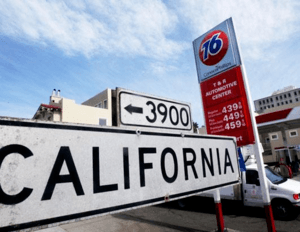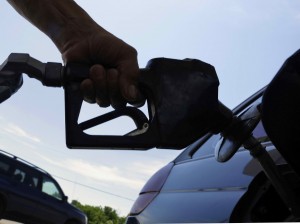The Battle of the Blends: Issues on Winter Blends and Ethanol Blend Wall
The rise of the price of gasoline has pushed a lot of issues into light lately. One of the most controversial topics in the industry presently is the gasoline blends traditionally not used in certain circumstances.
Below, I quote some pieces of an excellent article by Michael Frank on Popular Mechanics
“Lots of drivers out there probably didn’t know (or care) that gasoline is blended differently for summer or winter. Recently, though, that issue has been capturing headlines, thanks to a showdown in California, where Gov. Jerry Brown wants to allow the early use of the so-called winter-blend gas in a play to bring down spiking gas prices in the Golden State. “
 Winter Blends Come Early
Winter Blends Come Early
California, which usually converts their use of blends on October 31 received the mandate to use winter blends earlier. Why is this an issue? Let’s differentiate summer from winter blends.
Summer and winter blends are formulated to control Volatile Organic Compounds (VOCs). VOCs evaporate the hotter the temperature gets. Gasoline is also measured on a system of RVP or Reid Vapor Pressure in pounds per square inch or PSI. A gas blend with a higher RVP number is easier to evaporate and is dangerous to the environment and health. All blends are also mandated to not fall below the 14.7 average atmospheric pressure. When the PSI of a gasoline goes over this, it starts to become a gas.
[quote] During the summer heat, the RVP of gas has to be especially low to keep it from boiling off. The EPA mandates an RVP maximum of anywhere between 9.0 PSI and 7.8 PSI for summer-grade fuel, depending on region (though you get a fudge factor of 1 psi for using gas blended with 10 percent ethanol). There are even lower RVP-rated fuels for cities like Houston, New York, and L.A. Different states and cities have their own rules based upon their seasonal temperatures—Washington state needs different summer gas than, say, Florida. That’s why there are so many blends. To make it more complicated, the time for switching from summer- to winter-blend gasoline varies by state too. [/quote]
This is the reason why the early use of winter blends opened up problems for California. After its prices of gasoline hit an all-time high, officials mandated early use of the cheaper winter blends to balance things. This, however, comes with many risks.
[quote] So Brown’s loosening of the rules on gas blends is an attempt to fight back against that vulnerability and bring prices back down. But there’s no guarantee. Gasoline is a commodity, and yet the price-setting system has only a loose relationship to supply and demand. [/quote]
More Problems Arise
The battle between the summer and winter blends is not the only problem. Just this year, hearings were held regarding the Renewable Fuel Standard (RFS) by the Energy and Commerce Committee. Also called ethanol mandate, it concerns the changing of the required ethanol blending threshold of RFS with US gasoline. Most cars can only accommodate a maximum dose of 10% ethanol.
 Why the Need for the Ethanol Blend Wall?
Why the Need for the Ethanol Blend Wall?
The original purpose of approving this is to reduce the reliance of US on imported oil and reduce greenhouse gas emissions. With lower energy content, blending the two can displace around the 540,000 barrels per day usually produced from petroleum.
The Downsides of the Ethanol Blend Wall
The mechanical integrity of the seals and pumps in engines and fuel systems will be put at risk with more ethanol in the gasoline. Major car brands have already expressed that any possible damage brought to a car’s system by this new mix will not be covered by their warranty.
The claimed environmental benefits offered by the ethanol blend wall are questionable as well. If the production of biomass used on ethanol is done wrong, habitats, air and water quality, and food production can suffer.
The Bottom-line
Issues regarding gasoline have always been complicated. One solution leads to another risk. In the end, it is just up for people to decide which points they want to stick to. Alternatives also exist. For example, using fuel additives to prevent excessive emissions can be a good solution. It can also improve the temperature threshold of fuel and promotes proper burning.
Do You Want to be Updated on the Latest Gasoline News?
Leave a comment below for more.
About the Author
Tech Guy
Automotive enthusiast, passionate about Jeeps, hot-rods, turbos, performance, efficiency, diesels, fuels, high performance oils, additives and anything with an engine.

